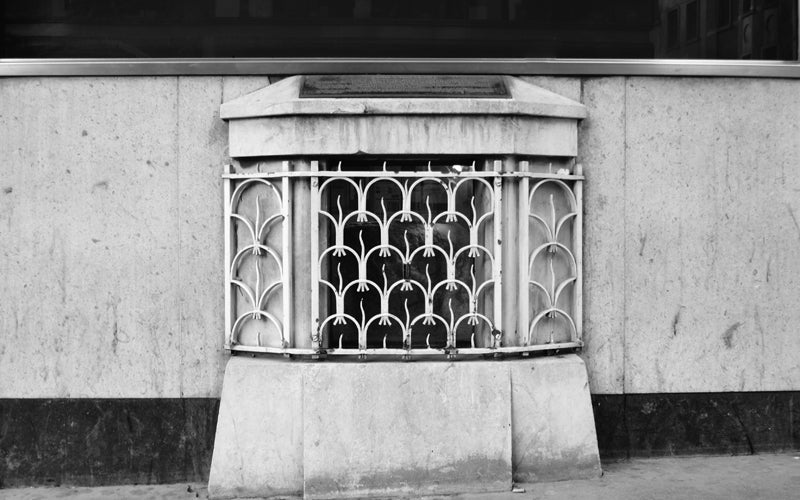The London stone 'just needs some love'

Your support helps us to tell the story
From reproductive rights to climate change to Big Tech, The Independent is on the ground when the story is developing. Whether it's investigating the financials of Elon Musk's pro-Trump PAC or producing our latest documentary, 'The A Word', which shines a light on the American women fighting for reproductive rights, we know how important it is to parse out the facts from the messaging.
At such a critical moment in US history, we need reporters on the ground. Your donation allows us to keep sending journalists to speak to both sides of the story.
The Independent is trusted by Americans across the entire political spectrum. And unlike many other quality news outlets, we choose not to lock Americans out of our reporting and analysis with paywalls. We believe quality journalism should be available to everyone, paid for by those who can afford it.
Your support makes all the difference.Mix two parts legend to one part myth, sprinkle some facts and grill for a few decades: the London Stone is London's enigmatic emblem, tightrope-walking over a sea of mystery and romance from its ersatz home on one of the city's busiest commercial streets.
Thought to be Roman in origin, the stone is said to have been the point from which all distances were measured in Londinium. Though attached with the apocryphal tale of Brutus of Troy, a medieval incarnation of Greek hero Aeneas, the stone became better known in the middle ages as a place for deal-brokering. It became notorious in 1450 when rebel Jack Cade struck it with his sword, proclaiming himself Lord of London and vowing to overthrow King Henry VI. In later years the stone's home became St Swithin's Church off Cannon Street, a Wren beauty. Yet when the church was destroyed by a German bomb in 1940 the stone found itself trapped into a tiny grill next door, where it cuts a rather odd figure today. Word has it developers plan to make it a central sight at the forthcoming Cannon Street station, but legend says that if the stone is damaged then London will fall. An odd relic, to say the least.
But what does the Stone think of us? You might think such a question is unanswerable but on Monday night a Twitter interview, or Twinterview, brought an exclusive interview with the Stone itself. And far from being rocked by qualms and queries, the Stone batted back interrogations of its past, present and future with masonic aplomb.
While some questions were irreverent - 'have you developed a shoe fetish from ground level?' ("I like to see who has odd socks on") - there were others that have been argued for centuries. How old is the Stone, really? "I'm so old I've lost my Marbles a little bit. Not unlike Greece in that respect...I can't remember my own age. There aren't really any records of me pre middle ages, yet you humans think I'm Roman!" Maybe the stone was punch-drunk 2,000 years back, by being beaten into shape by Trojan hero Brutus. "Brutus? Well, the chap was mythical yet I'm very much here. But I do like the legend."
When you're talking to a famous stone, an obvious question to ask (other than 'why am I talking to a stone?') is what it makes of its more famous rocky brethren. The Rosetta Stone? "Very sweet." What about the Blarney Stone? "Good for the craic. My favourite other Stone is Keith Richards."
Very funny - but seriously, what does it think about the Rosetta Stone bounding over here and stealing its thunder? "(The) Rosetta Stone is historically very important, but I'm London's oldest monument & have a touch of mysterious glamour," it says. And it's got a point: there is a sort of understated beauty about the London Stone - the thinking man's artefact, perhaps.
Word has it plans are afoot to move the London Stone across Cannon Street, to a shiny new eponymous underground station. Some may see it as a chance to show the Stone in a rosier shade, but it has other ideas: "I believe I should stay put, and would like humans to appreciate the history of my location, and what I've survived here."
It's clear the Stone has a chip on its, er, shoulder about its maligned recognition, something it is keen to redress. "Seriously now, anyone from London should realise I'm an important part of their heritage. I may not look much, but I AM London," it says. And while Stonehenge is "a better looker, I just want a little bit of love.". So let's get out there and give it some love, London! Yes, there are millions of pretty foreign treasures to be seen in the city, but make sure you give the London Stone some of your precious time. If you don't, someone might move it. And if the story's true, none of us wants to deal with that...
Video – Visit to the London Stone
Join our commenting forum
Join thought-provoking conversations, follow other Independent readers and see their replies
Comments